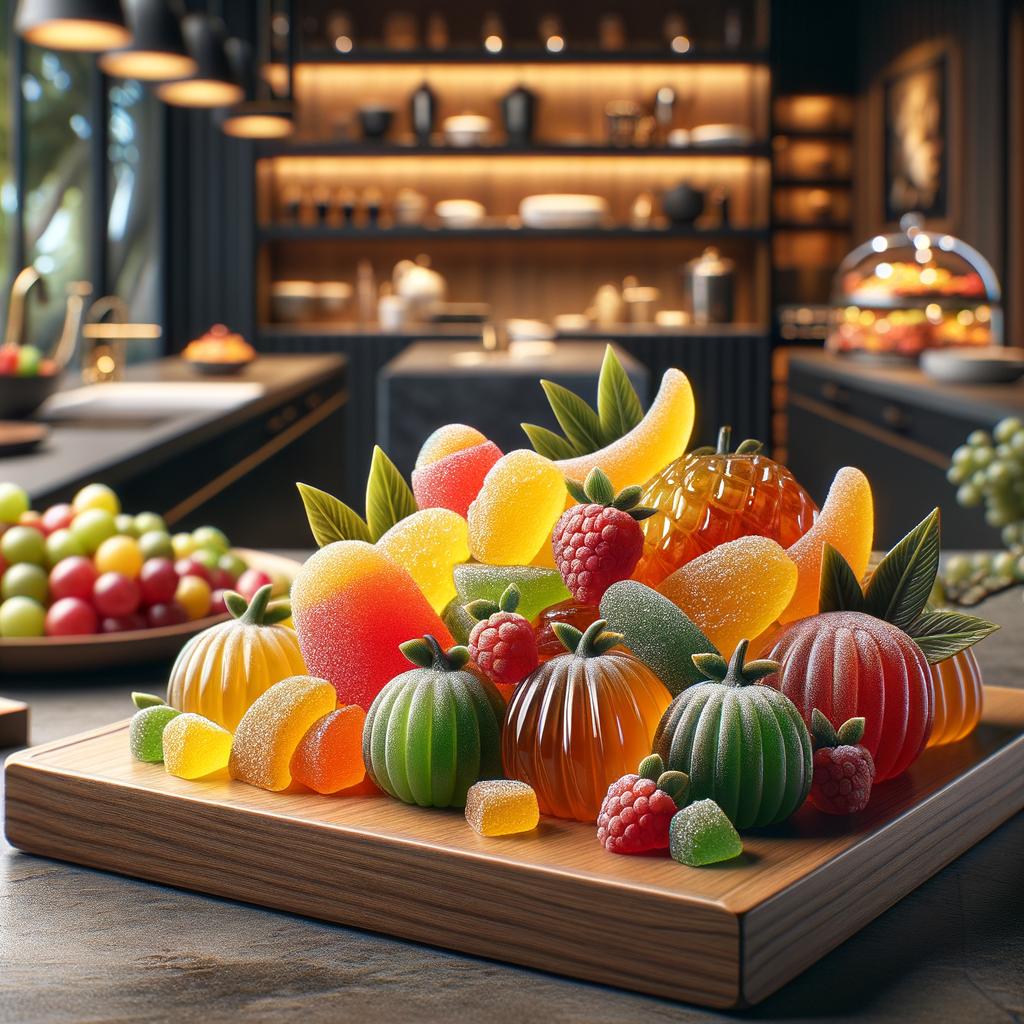Candied Fruit

Description Candied fruit, often referred to as crystallized fruit, is a jewel-like delight that has fascinated the culinary world for centuries. This delicacy is a symphony of texture and flavor - the outer layer is a glossy, crystalline shell that gives way to a supple, chewy interior. The flavor is a delightful paradox, a harmonious blend of the fruit's natural tanginess, artfully balanced with the sweet allure of sugar. What sets candied fruit apart from its fresh counterparts is the process of preservation, where the water within the fruit is replaced with sugar, resulting in a delightful, long-lasting treat.
Primary Uses Candied fruits are a versatile ingredient, adding a burst of sweetness and color to a myriad of dishes. They are a key component in traditional holiday fruitcakes, a staple in panettone - the Italian Christmas bread, and the star in the French Provençal confectionery, Calissons. They are also used to garnish desserts, mixed into ice creams, or served alongside coffee as a sweet nibble. Beyond the culinary realm, candied fruits hold a special place in many cultural celebrations, symbolizing prosperity, longevity, and good fortune.
History The art of candying fruit originated in the Middle East around the 14th century as a method to preserve the bountiful harvests of apricots, cherries, and citrus fruits. Marco Polo's accounts indicate that he encountered these sweet treasures during his travels. Over time, the technique spread across Europe, with each region adding its unique twist. In the Victorian era, candied fruits were considered a luxury item, often gifted during the holidays. There is a romantic tale from the 16th century, where a French confectioner allegedly created the first candied fruit to win the heart of a beautiful maiden.
Nutritional Information While candied fruit is undoubtedly a sweet indulgence, it retains some nutritional value from its fresh origins. The fruit provides a source of dietary fiber and contains traces of vitamins and minerals, most notably vitamin C and potassium. However, the sugar content is significantly higher than in fresh fruit, so it should be enjoyed in moderation. Compared to dried fruit, candied fruit has a higher sugar content but offers a unique texture and flavor profile that makes it a distinctive choice for culinary creations.

